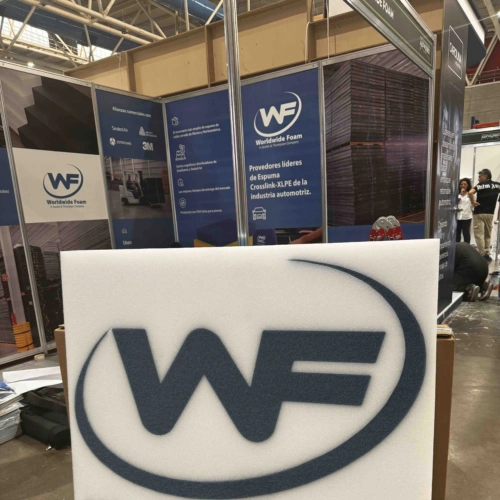| October 23, 2024
One of the key elements in ensuring that products reach their destination intact, across any industry, is the use of foam. However, with several types of foam available, the main two that often cause confusion are closed-cell foam and open-cell foam.
Although both types are used in a variety of applications, their unique characteristics make them more or less suitable depending on the specific purpose. In this article, we'll help you understand the differences between the two and explain why closed-cell foam is often the better option for packaging and thermal insulation.
What is closed-cell foam?
Closed-cell foam is a material in which the cells or bubbles within the foam are completely sealed. This means there is no passage of air or water between the cells, resulting in a dense, firm structure.
This type of foam is highly resistant to both water and compression, making it ideal for applications where durability and protection are required. One of the most popular types of closed-cell foam is closed-cell polyethylene foam, which is known for being lightweight and offering high shock absorption.
In addition, closed-cell elastomeric foam is widely used, especially in thermal insulation applications.
What is open-cell foam?
In contrast, open-cell foam has a much softer, more flexible structure. The cells in this type of foam are connected, allowing air and water to pass through them.
This makes open-cell foam lighter, but also less durable than closed-cell foam. It’s often used in applications where cushioning is the priority, such as in cushions or seating. However, it is not ideal for environments where protection against moisture or compression is needed.
Key differences between closed-cell and open-cell foam
Now that we’ve covered the basics of each type, let’s dive into the key differences between closed-cell and open-cell foam, and how these impact their use in packaging.
Density
Closed-cell foam is significantly denser than open-cell foam. This density makes it stronger and more resistant to compression, making it the ideal choice for protecting heavy or delicate products during transportation.
Water resistance
Thanks to its sealed structure, closed-cell foam is waterproof. It does not absorb water, making it perfect for protecting products in humid environments or during long-term storage. In contrast, open-cell foam can absorb water, making it less suitable for such applications.
Thermal insulation
Closed-cell polyethylene foam and closed-cell elastomeric foam are excellent thermal insulators. Their dense structure significantly reduces heat transfer, making them ideal not only for packaging but also for industrial applications that require temperature control, such as cold storage or HVAC systems.
Cushioning capacity
While both foams offer cushioning, open-cell foam is softer and more flexible, making it more suitable for lightweight products that don’t require heavy-duty protection. On the other hand, closed-cell foam is better at absorbing heavy impacts, as its rigid structure distributes force more evenly.
Which should you choose for packaging?
When choosing between closed-cell and open-cell foam for packaging, the answer depends on your product’s specific needs. If you require robust protection against impacts, moisture, and temperature changes, closed-cell polyethylene foam or closed-cell elastomeric foam are the most recommended options.
For example, if you’re packaging electronics, delicate machinery, or components that need protection from water and impacts, closed-cell foam is your best bet. Its thermal insulation capabilities are also an added advantage if your products need to be transported at varying temperatures, ensuring they arrive in perfect condition.
On the other hand, if you need cushioning for lightweight items, such as textiles or personal care products, and don’t need to worry about moisture or thermal insulation, open-cell foam may suffice.
Benefits of closed-cell polyethylene foam
Closed-cell polyethylene foam is a favorite in the packaging industry because of its unique characteristics, such as:
Lightweight: Despite being strong, it is extremely lightweight, which helps reduce shipping costs.
Chemical resistance: It is resistant to many chemicals, making it ideal for protecting products in industrial environments.
Durability: Its high density makes it very durable, even in extreme conditions.
Closed-cell elastomeric foam applications
Although closed-cell elastomeric foam is also widely used in packaging, it is particularly well-known for its thermal insulation capabilities. This foam is commonly used in the construction industry for pipes, ducts, and HVAC systems.
However, it can also be useful in packaging products that are sensitive to temperature fluctuations, such as food or pharmaceuticals.
Which foam is right for you?
Both closed-cell and open-cell foams have their advantages, but when it comes to product packaging and protection, closed-cell foam comes out on top. Its strength, waterproof qualities, and thermal insulation properties make it the preferred choice for protecting delicate and expensive products.
If you’re looking for a reliable solution for your packaging needs, closed-cell polyethylene foam or closed-cell elastomeric foam will be your best investment.
Worldwide Foam

We are leaders in the supply of closed cell polyethylene foam in Mexico. We support various industries by offering a wide range of products and complementary services.










